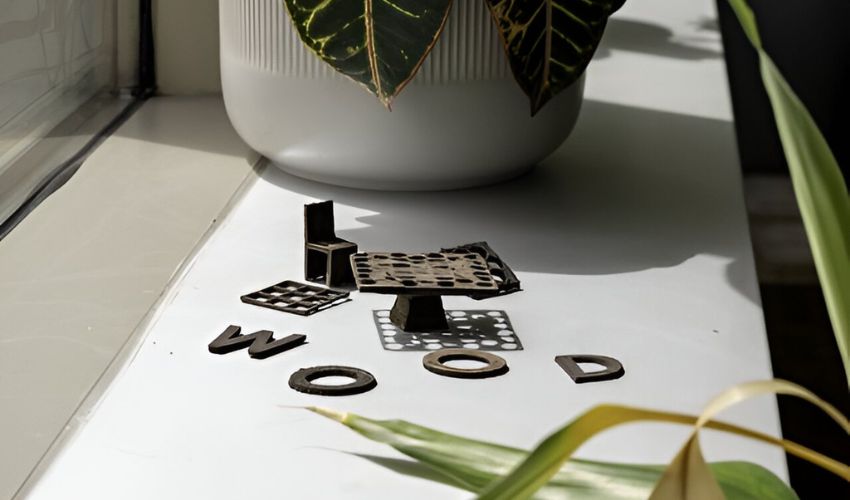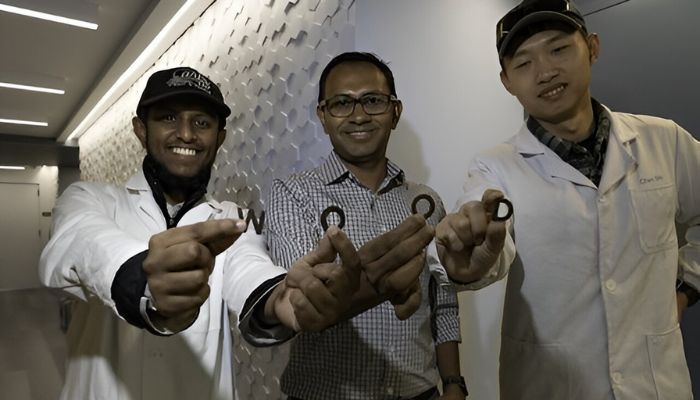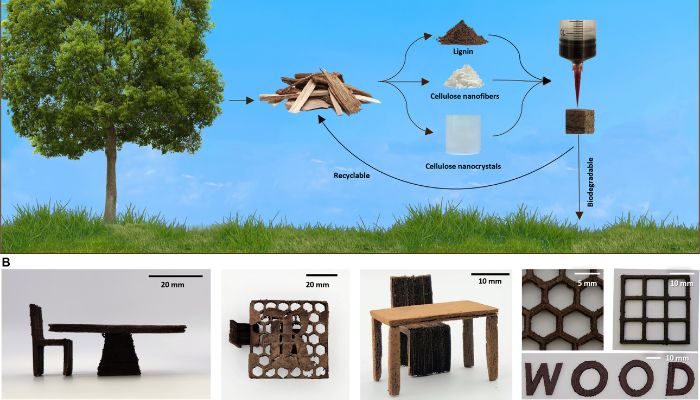New 3D Printed Wood Heralded as Greener Alternative to Traditional Manufacturing

When we think of furniture or homes, it is undeniable that the material that comes first to mind is wood. However, the creation of objects with wood has been controversial due to wasteful practices that contribute to air, water and land pollution. But there may be a solution. Researchers from Rice University have announced that they have developed a new process to create 3D printed wood for sustainable structures, creating a greener alternative to traditional manufacturing methods.
But how wasteful are our current practices? Well, a report from the United States Environmental Protection Agency (EPA) estimated that in 2018, landfills received 12.2 million tons of wood, with the number increasing every year. Adding to that the fact that deforestation is one of the major environmental concerns in our times, as it is occurring at a rate of about 10 million hectares per year and causes not only a loss of biodiversity but a loss of a significant source of carbon absorption, it is no surprise that more sustainable alternatives are being developed.

Muhammad Rhaman (center) and his lab spearheaded this 3D printed wood project
Muhammad Rahman, an assistant research professor of materials science and nanoengineering at Rice explains, “The ability to create a wood structure directly from its own natural components sets the stage for a more eco-friendly and innovative future. It heralds a new era of sustainable 3D-printed wood construction.”
Making the 3D Printed Wood
In terms of the process itself, a press release from Rice University explained that the researchers first developed an additive-free, water-based ink made of lignin and cellulose, the building blocks of wood. This ink could then create these intricate 3D printed wood structures using direct ink writing, an extrusion-based process that is often used for microscale applications and which involves the deposition of ink from small nozzles under controlled flow rates to specifically defined paths.
Indeed, the capacity for microscale production was one of the key point of the process. “Unlike previous attempts, this method exclusively uses nanoscale wood components for 3D printing, marking a significant advancement in the field,” commented Pulickel Ajayan, the Benjamin M. and Mary Greenwood Anderson Professor in Engineering and professor and chair of materials science and nanoengineering.

A schematic showing the 3D printed wood process as well as some examples of microscale parts
Moreover, as can be expected, the ink itself was central to the process. To create it, the researchers optimized the composition of ink by adjusting ratios of lignin, cellulose nanofibers and nanocrystals. This was done in order to maintain the natural lignin-cellulose balance.
Furthermore, what makes it even more exceptional, according to Amit Naskar, a project collaborator and senior research and development staff at Oak Ridge National Laboratory, is that that though lignin is one of the most abundant biopolymers on Earth, it is not valued in industry. Therefore, not only are these wood components extremely similar to real wood, as found in testing which showed that the part matched natural wood in texture, scent and strength, but this process could allow industries such as paper to effectively recycle a common waste product.
The 3D printed wood components were further evaluated through mechanical tests to evaluate compressive and bending strengths, a key consideration given woods use for furniture and construction. The results were promising, showing that the 3D printed wood was able to surpass even balsa wood, widely used in woodworking. You can find out more in the published study HERE.
What do you think of this new method to make 3D printed wood? Do you think we’ll see it being used in the construction and furniture industries? Let us know in a comment below or on our LinkedIn, Facebook, and Twitter pages! Don’t forget to sign up for our free weekly newsletter here, the latest 3D printing news straight to your inbox! You can also find all our videos on our YouTube channel.
*All Photo Credits: Gustavo Raskosky/Rice University






